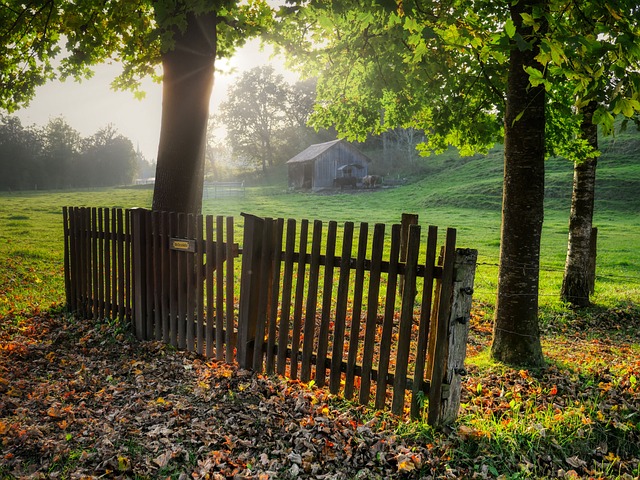Large properties present unique challenges when it comes to fencing, demanding solutions that balance durability, aesthetics, and affordability. This article explores cost-effective fencing options tailored for extensive land areas, delving into the specific needs of large property owners. We compare traditional methods with innovative, budget-friendly alternatives, emphasizing sustainable materials and their long-term benefits. Additionally, we guide readers through installation, maintenance tips, and highlight the longevity of these solutions, ensuring a secure and aesthetically pleasing outdoor space without compromising on cost.
- Understanding Large Property Fencing Needs
- Traditional vs. Cost-Effective Solutions
- Sustainable and Durable Materials
- Installation, Maintenance, and Longevity
Understanding Large Property Fencing Needs
Fencing a large property presents unique challenges compared to smaller plots. The sheer size requires materials and installations that can handle distance and often harsh environmental conditions. Additionally, large properties may need fencing for both aesthetic reasons and functional purposes, such as security, livestock containment, or defining boundaries with neighbors.
Understanding these varied needs is crucial when selecting a cost-effective solution. For instance, while traditional wooden fences might be aesthetically pleasing on smaller plots, they can be expensive and prone to rot over time at larger scales. Alternatively, durable materials like vinyl, steel, or even concrete may offer better value in the long run, despite initial higher costs.
Traditional vs. Cost-Effective Solutions
In the realm of property fencing, there’s often a tension between aesthetics and affordability. Traditional solutions, such as wrought iron or wooden picket fences, offer charming designs but come with substantial costs, especially for large properties. These materials are not only expensive to purchase but also require regular maintenance, painting, or sealing to prevent rot and corrosion, adding further to the overall expenses.
Cost-effective fencing solutions, on the other hand, provide an attractive alternative without breaking the bank. Materials like vinyl, chain link, or even modern composite options are durable, low-maintenance, and often come with longer warranties. These practical choices not only save on initial installation costs but also reduce long-term expenses related to upkeep, making them a sensible choice for large properties seeking both functionality and affordability.
Sustainable and Durable Materials
When considering fencing solutions for large properties, opting for sustainable and durable materials is a smart choice. Modern innovations in the fencing industry have led to the development of eco-friendly options that not only reduce environmental impact but also stand the test of time. Materials like recycled plastic, steel, and certain types of wood are excellent choices for large-scale projects.
Recycled plastic fencing offers durability and low maintenance, making it ideal for extensive landscapes. Steel fences provide strength and longevity, perfect for securing vast areas. Additionally, choosing locally sourced materials or those with certified sustainable practices ensures minimal environmental harm while still offering robust and long-lasting solutions for your property’s perimeter.
Installation, Maintenance, and Longevity
The initial installation process for fencing solutions is a critical aspect to consider. For large properties, efficient planning and skilled labor are essential to ensure a robust and secure fence. A cost-effective approach can involve using versatile materials like vinyl or wood, which offer good value and durability. Proper installation techniques, including proper grounding and anchoring, will enhance the longevity of the fence, reducing long-term maintenance costs.
Maintenance plays a vital role in determining the overall lifespan of any fencing system. Regular cleaning and inspection are necessary to protect against rot, pest damage, and weather-related wear and tear. Simple care routines, such as applying protective coatings or sealing, can significantly extend the life of wooden fences. Metal or vinyl fences typically require less maintenance but still benefit from periodic checks and light repairs, ensuring they remain functional and aesthetically pleasing for years to come.
